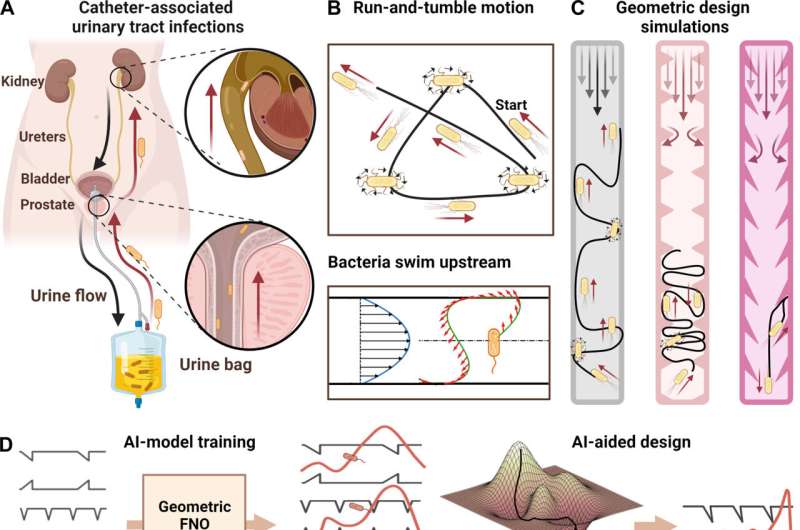Bacteria are remarkably good swimmers—a trait that can be detrimental to human health. One of the most common bacterial infections in a health care setting comes from bacteria entering the body through catheters, thin tubes inserted in the urinary tract. Though catheters are designed to draw fluids out of a patient, bacteria are able to propel themselves upstream and into the body via catheter tubes using a unique swimming motion, causing $300 million of catheter-associated urinary infections in the U.S. annually.
Now, an interdisciplinary project at Caltech has designed a new type of catheter tube that impedes the upstream mobility of bacteria, without the need for antibiotics or other chemical antimicrobial methods. With the new design, which was optimized by novel artificial intelligence (AI) technology, the number of bacteria that are able to swim upstream in laboratory experiments was reduced 100-fold.
The paper, “AI-aided geometric design of anti-infection catheters,” was published in the journal Science Advances on January 3.
In catheter tubes, fluid exhibits a so-called Poiseuille flow, an effect where fluid movement is faster in the center but slow near the wall, similar to the flow in a river’s current, where the velocity of the water varies from fast in the center to slow near the banks. Bacteria, as self-propelling organisms, exhibit a unique “two-step forward along the wall, one-step back in the middle” motion that produces their forward progress in tubular structures. Researchers in the Brady lab had previously modeled this phenomenon.
“One day, I shared this intriguing phenomenon with Chiara Daraio, framing it simply as a ‘cool thing,’ and her response shifted the conversation toward a practical application,” says Tingtao Edmond Zhou, postdoctoral scholar in chemical engineering and a co-first author of the study. “Chiara’s research often plays with all kinds of interesting geometries, and she suggested tackling this problem with simple geometries.”

